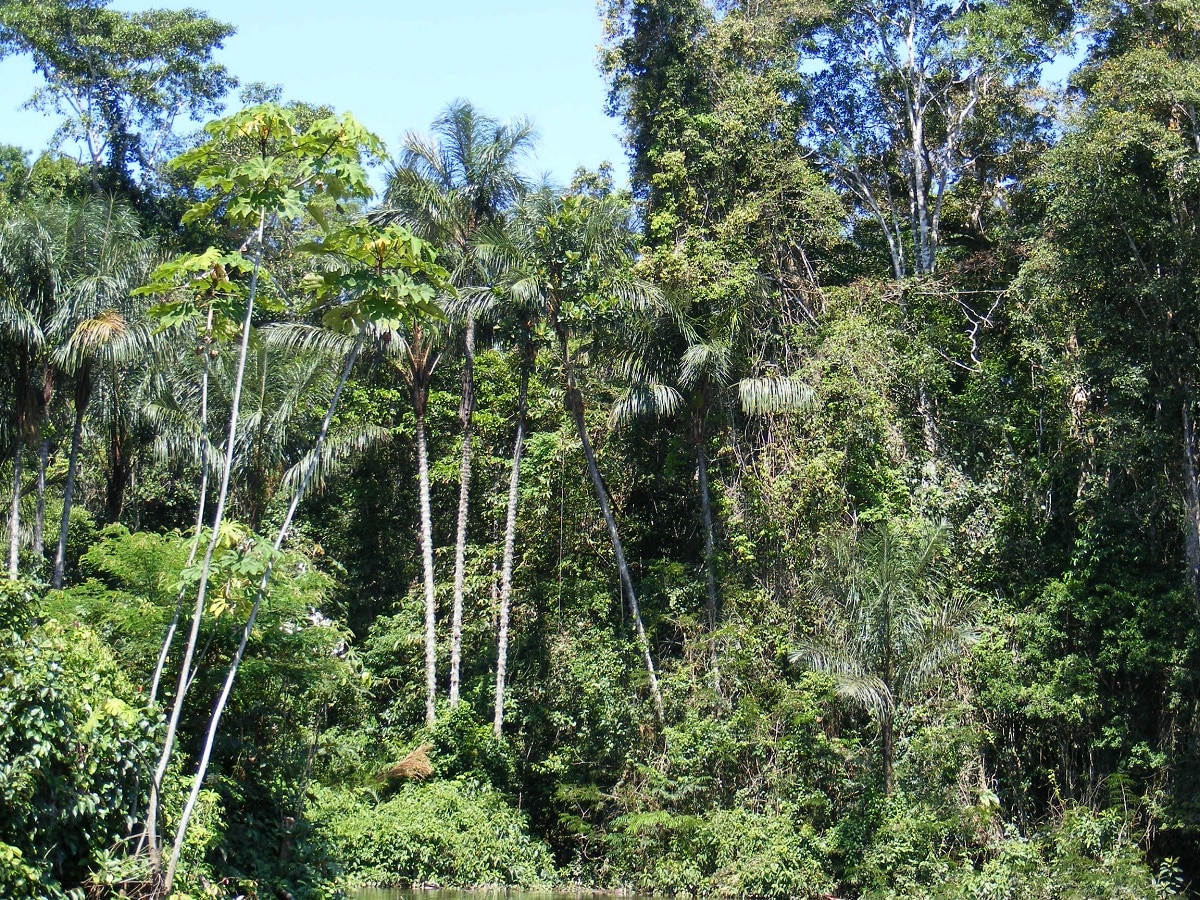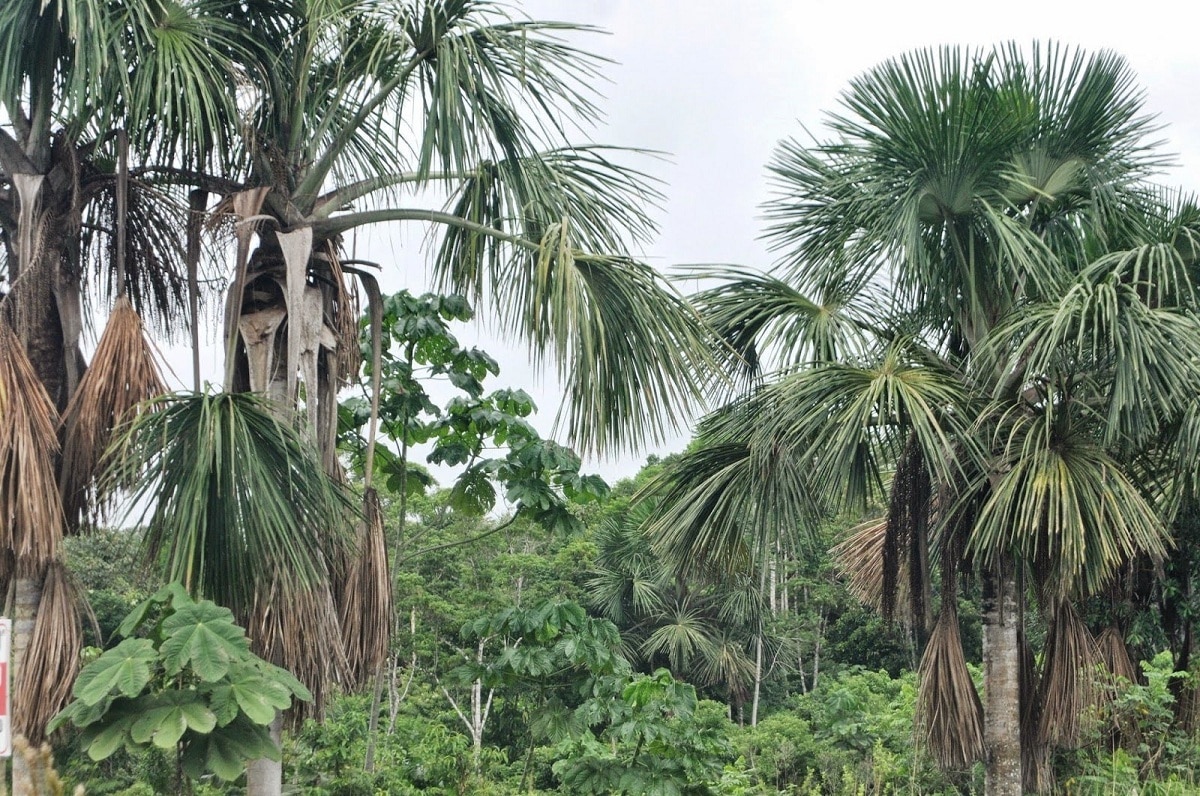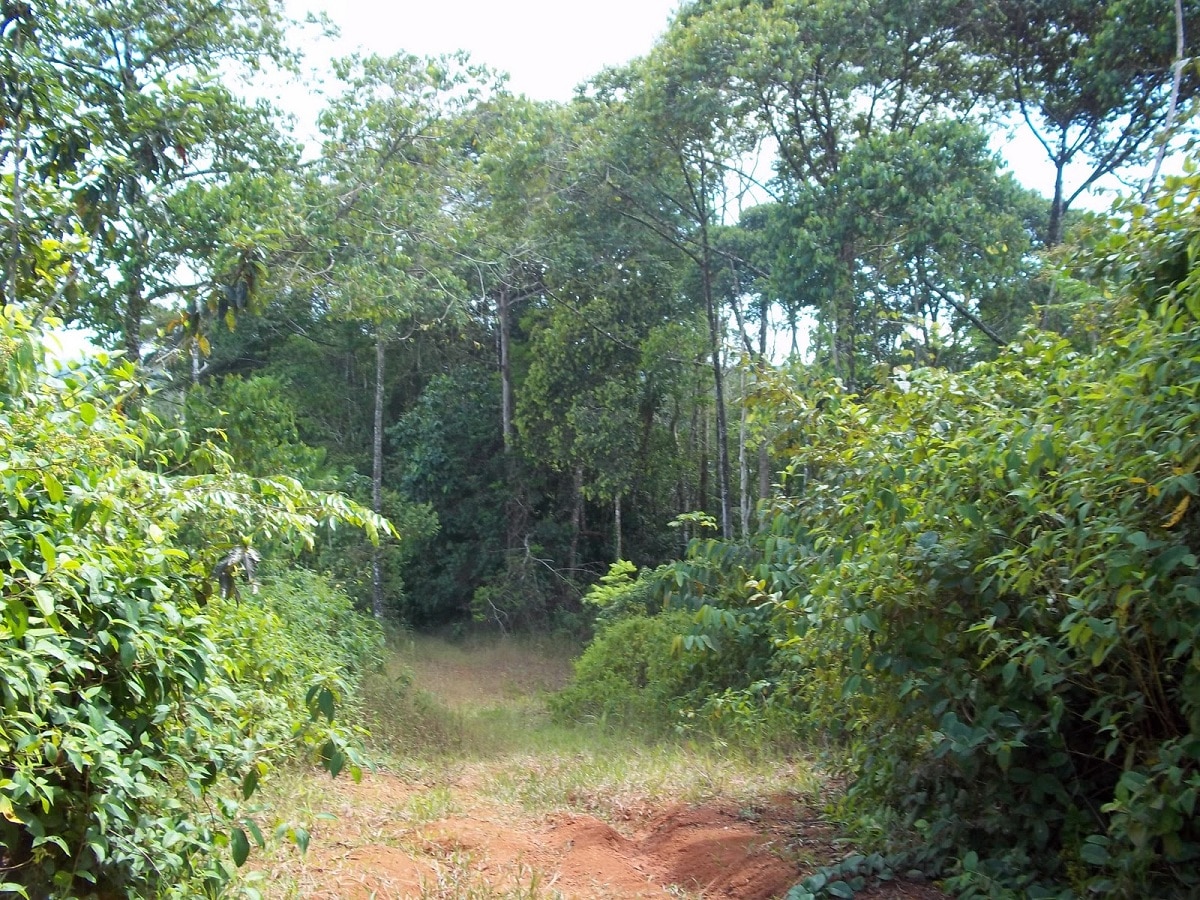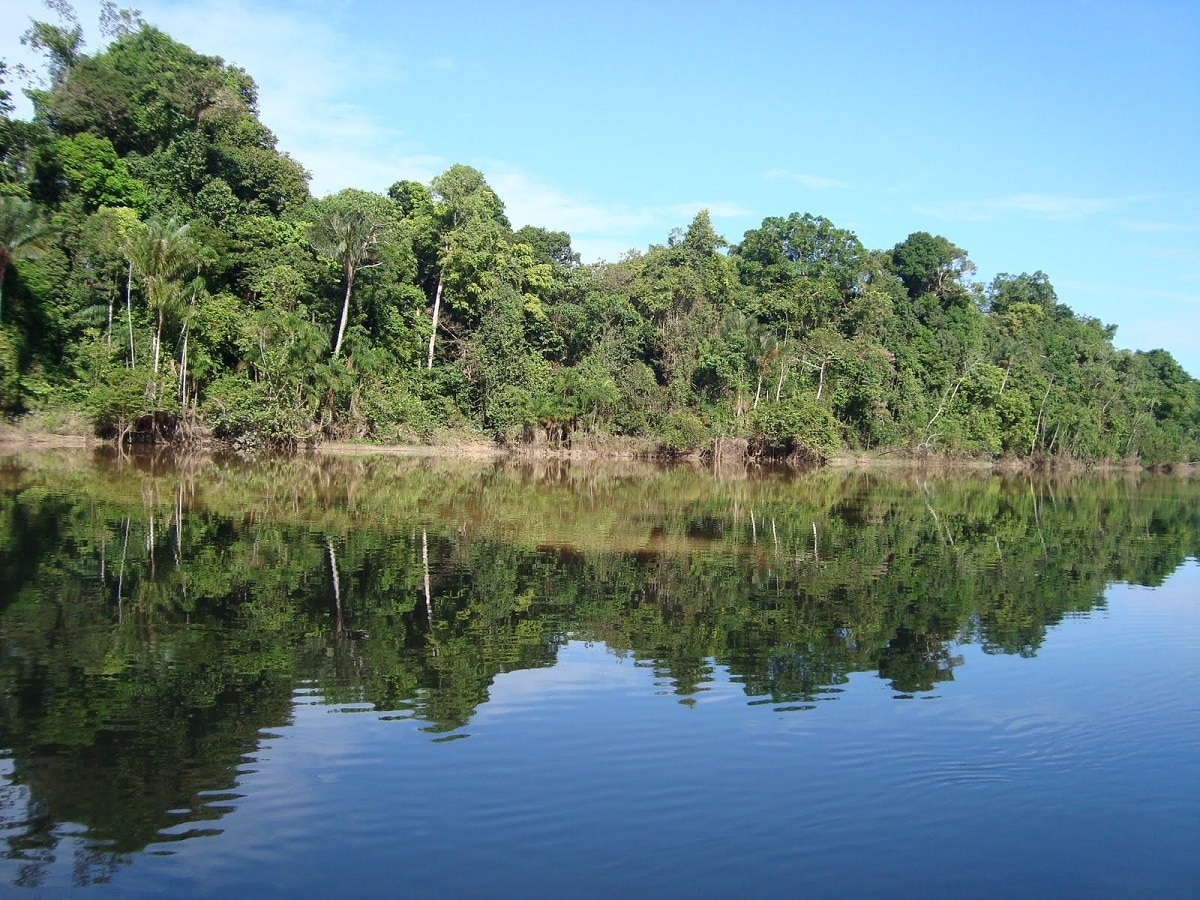
There are different types of ecosystems depending on the environmental conditions present. Today we are going to talk about the Low jungle. It corresponds to the area of the Peruvian Amazon jungle that extends from the east of the Andean foothills. It is a type of quality tropical rainforest that has places with heights from 80 to 400 meters above sea level. It is the same basin of the Amazon river.
In this article we are going to tell you about all the characteristics, habitat, flora and fauna of the lower jungle.
Key features

It is a type of jungle also known as the Omagua region. It is composed of a plant formation with a complex structure of between 3 and 4 layers or levels of vegetation added to an understory. These vegetation floors are due to the different species and heights that are formed according to their growth and development. The understory is the low part that is under the treetops. Being a place with enough biodiversity abound epiphytes and climbing plants. All these features are part of the rainforest biome.
The lower jungle region presents dry and dry land, although it is also flooded forests, swamps and palm tree-lined savannas. The main characteristic of the lowland jungle stands out for having a warm climate whose temperatures are around 26 degrees on average and with abundant precipitations that surpass the 3.000 mm.
The jungle is located on a fairly extensive undulating plain in which the predominant soils have a sandy texture and a fairly abundant network of rivers and streams. The fauna is dense and insects and arachnids predominate. This predominance is due to the diversity of species and number of individuals. Also noteworthy is the presence of abundant freshwater fish, birds, reptiles and mammals among those that we find the peccary, numerous species of monkeys and the jaguar.
In terms of flora, there is a great diversity of vascular plants. We also see numerous species of ferns, mosses and lichens. It can be said that in just one hectare of the lowland forest more than 300 species of trees are identified with an abundance of orchids and bromeliads.
Habitat and location of the lowland forest

This entire region refers to the natural zone of Peru and develops in the plain that extends in the eastern part of the country. This area is the largest since it occupies an area of around 65 million hectares. The limits of the low jungle meet the high jungle in the Andean foothills. It can also be found to the east if we continue through the Amazon rainforest of Brazil, to the southeast it borders Bolivia and in the northern part it borders Colombia and Ecuador.
This lowland rainforest is considered a biome. This is because it is not a simple ecosystem, but rather a biome that includes a mosaic of ecosystems inside. In other words, it is a set of ecosystems in a single territory. We find the non-floodable forest, the floodplain forest, swamps, wetlands, white sand forests, etc. Each of these ecosystems has unique characteristics and a biodiversity that develops according to these environmental characteristics.
The vegetation structure of the lowland forest is not uniform. Due to the great diversity of species and the placement and requirements of each one of them, there is a great variability in the structure. On the one hand, in the non-flooded area we find soils that have a better structure and greater fertility. These areas have 3 or 4 floors of arboreal vegetation and an understory made up of trees and herbaceous plants. Thanks to the fertility of the soil and the density of the trees, a high humidity level is maintained throughout the year.
On the other hand, we have the upper floor of the jungle that reaches up to 40 meters in height and has emerging trees that have an altitude of 60 meters. Surrounding the trunks of the trees and in the lower part we find a great diversity of climbing plants of diverse nature as well as epiphytic plants.
Soil and climate of the lower jungle

The most normal thing is that the soils that predominate in the low jungle have a composition of sand, although it is the most variable. We also see sandy loam soils that tend to become clayey soils in the areas of higher humidity. They are normally nutrient-poor soils and are found circulating in the vegetation mass. There is a whole number of fungi and sects that contribute to the recycling and use of nutrients from dead organic matter. As we know, there are different interactions between living things called food chain. The last link in this chain are decomposers. Its main function is to extract organic matter from dead organisms. Thanks to this, it is possible to return to the initial state and recover all the energy of the network.
As for the climate, in the low jungle the tropical rainy and warm climate predominates. The temperature is quite high but the environmental conditions make the precipitations very abundant. Its high humidity comes from the clouds that are dragged from the Atlantic slope in a direction from the east to the west. All the clouds usually rise up the eastern face of the Andes and when they cool down they condense to unleash strong storms and abundant rainfall.
The maximum temperatures found in the lower jungle are around 37 degrees during the month of October. The minimums are presented in the month of July and are around 17 degrees. Thus, the mean is usually 26 degrees. By having abundant rains, with values of up to 3.000 millimeters, even exceeded some areas with 5.000 mm makes the level of relative humidity very high. We find areas with a relative humidity level of 88%.
I hope that with this information you can learn more about the lowland jungle and its characteristics.